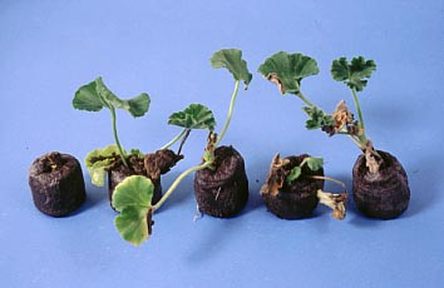Grey mold affecting cuttings and small seedlings
Botrytis cinerea, the pathogen causing grey mold,at first inhabits dead plant material, but it is also capable of infecting healthy plant tissue. Grey mold first manifests itself in the form of soft, damp patches, which develop into a light grey mycelium. This disease spreads through the air by means of conidia and remains viable in diseased plant parts and plant remains. Grey mold is a very common disease affecting numerous plant genera and species; it causes damage especially in moist, dense plant communities, where there is insufficient air circulation.
Botrytis cinerea, the pathogen causing grey mold,at first inhabits dead plant material, but it is also capable of infecting healthy plant tissue. Grey mold first manifests itself in the form of soft, damp patches, which develop into a light grey mycelium. This disease spreads through the air by means of conidia and remains viable in diseased plant parts and plant remains. Grey mold is a very common disease affecting numerous plant genera and species; it causes damage especially in moist, dense plant communities, where there is insufficient air circulation.




